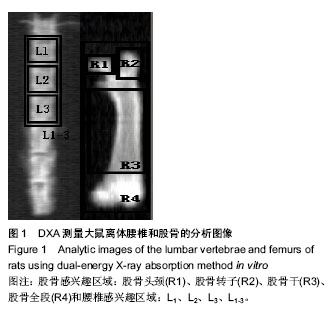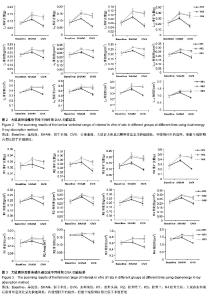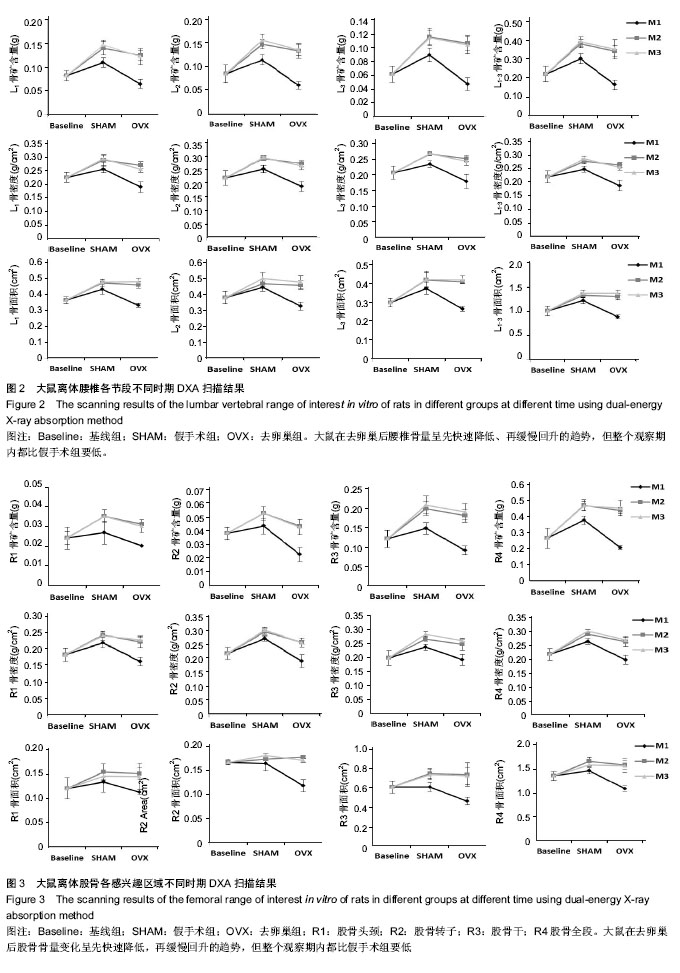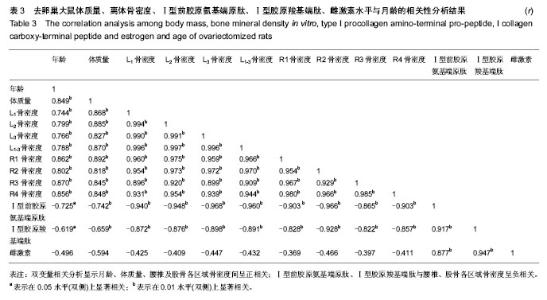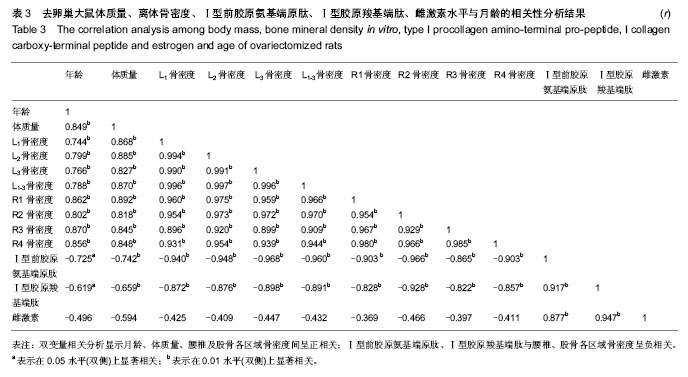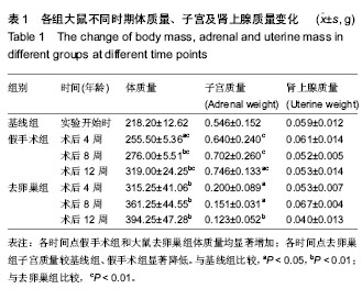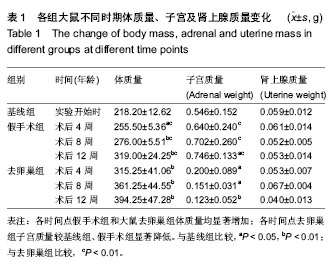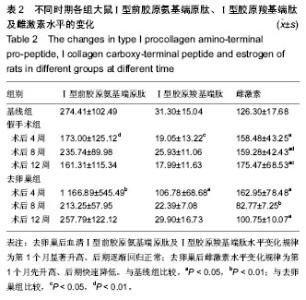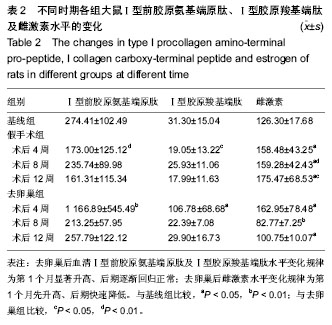| [1] Lelovas PP, Xanthos TT, Thoma SE, et al. The laboratory rat as an animal model for osteoporosis research. Comp Med. 2008;58(5): 424-430.
[2] Hamidi MS, Corey PN, Cheung AM. Effects of vitamin E on bone turnover markers among US postmenopausal women. J Bone Miner Res.2012;27(6):1368-1380.
[3] 马俊岭,郭海英,阳晓东.骨质疏松症的流行病学概况[J].中国全科医学,2009,12(18):1744-1746.
[4] 李素萍.骨质疏松动物模型的研究现状[J].中国组织工程研究与临床康复,2011,15(20):3767-3770.
[5] Yoon KH, Cho DC, Yu SH, et al. The Change of Bone Metabolism in Ovariectomized Rats: Analyses of Micro-CT Scan and Biochemical Markers of Bone Turnover. J Korean Neurosurg Soc.2012;51(5): 323-327.
[6] Kim HK, Kim MG, Leem KH. Osteogenic activity of collagen peptide via ERK/MAPK pathway mediated boosting of collagen synthesis and its therapeutic efficacy in osteoporotic bone by back-scattered electron imaging and microarchitecture analysis. Molecules.2013;18(12): 15474-15489.
[7] Ma B, Zhang Q, Wu D, et al. Strontium fructose 1,6-diphosphate prevents bone loss in a rat model of postmenopausal osteoporosis via the OPG/RANKL/RANK pathway. ActaPharmacol Sin.2012;33(4): 479-489.
[8] Waarsing JH, Day JS, van der Linden JC,et al. Detecting and tracking local changes in the tibiae of individual rats: a novel method to analyse longitudinal in vivo micro-CT data. Bone. 2004;34(1):163-169.
[9] Li CY, Schaffler MB, Wolde-Semait HT, et al. Genetic background influences cortical bone response to ovariectomy. J Bone Miner Res.2005;20(12): 2150-2158.
[10] De Groot LJ, Jameson JL.Growth hormone deficiency in adults: De Croot’ Textbook of Endocrinology. Philadelphia, Saunders.2006;1: 755-765.
[11] 韩天雨,朴淑敏.去卵巢大鼠血清和骨髓细胞碱性磷酸酶水平变化的动态观察[J].中国实验动物学报,2014,22(4):37-40.
[12] Schneider JG, Tompkins C, Blumenthal RS, et al. The metabolic syndrome in women. Cardiol Rev.2006;14: 286-291.
[13] Rogers NH, Perfield JW, Strissel KJ, et al. Reduced energy expenditure and increased inflammation are early events in the development of ovariectomy-induced obesity. Endocrinology. 2009;150(5): 2161-2168.
[14] Pinheiro MM, Reis Neto ET, Machado FS, et al. Risk factors for osteoporotic fractures and low bone density in pre and postmenopausal women.Rev SaudePublica.2010;44(3): 479-485.
[15] Gourlay ML, Hammett-Stabler CA, Renner JB, et al. Associations between Body Composition, Hormonal and Lifestyle Factors, Bone Turnover, and BMD. J Bone Metab. 2014;21(1):61-68.
[16] 朱锐,沈霖,杨艳萍.年龄、身高、体重、体重指数与武汉地区绝经后骨质疏松症患者骨密度的关系[J].中华骨质疏松和骨矿盐疾病杂志,2010,3(4):234-238.
[17] Li M, Li Y, Deng W, et al. Chinese bone turnover marker study: reference ranges for C-terminal telopeptide of type I collagen and procollagen I N-terminal Peptide by age and gender. PLoS One.2014;9(8):1-7.
[18] 欧萌萌,黄建荣.绝经后妇女骨质疏松症患者血清β-Crosslaps、PINP和N-MID检测的评价[J].标记免疫分析与临床,2011,18(4): 238-240.
[19] 赵玺,赵文,孙璟,等.骨代谢指标与骨关节炎及绝经后骨质疏松症的关系[J].中国组织工程研究,2014,18(2):245-250.
[20] 许爱萍.骨代谢标志物与绝经后妇女骨质疏松症的相关性研究[J].检验医学与临床,2009,12(24):2019-2110.
[21] 高植明.去卵巢大鼠骨质疏松模型特点及尼尔雌醇对其干预作用的研究[J].中国医药导报,2011,8(2):14-17. |

